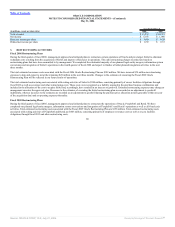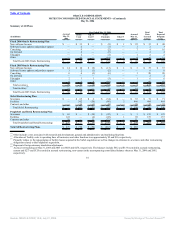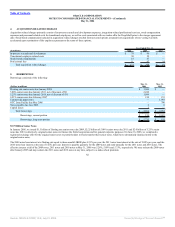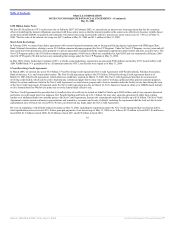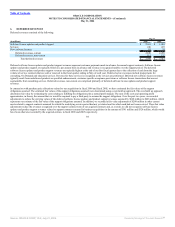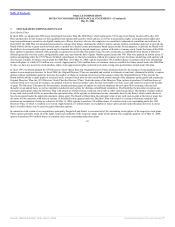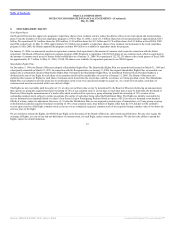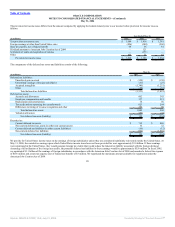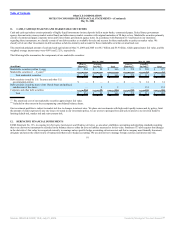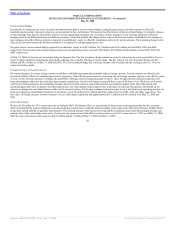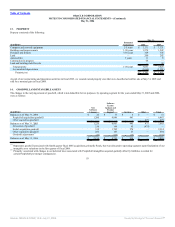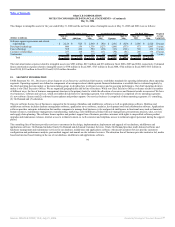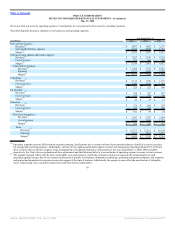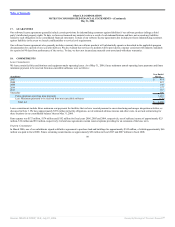Oracle 2005 Annual Report Download - page 93
Download and view the complete annual report
Please find page 93 of the 2005 Oracle annual report below. You can navigate through the pages in the report by either clicking on the pages listed below, or by using the keyword search tool below to find specific information within the annual report.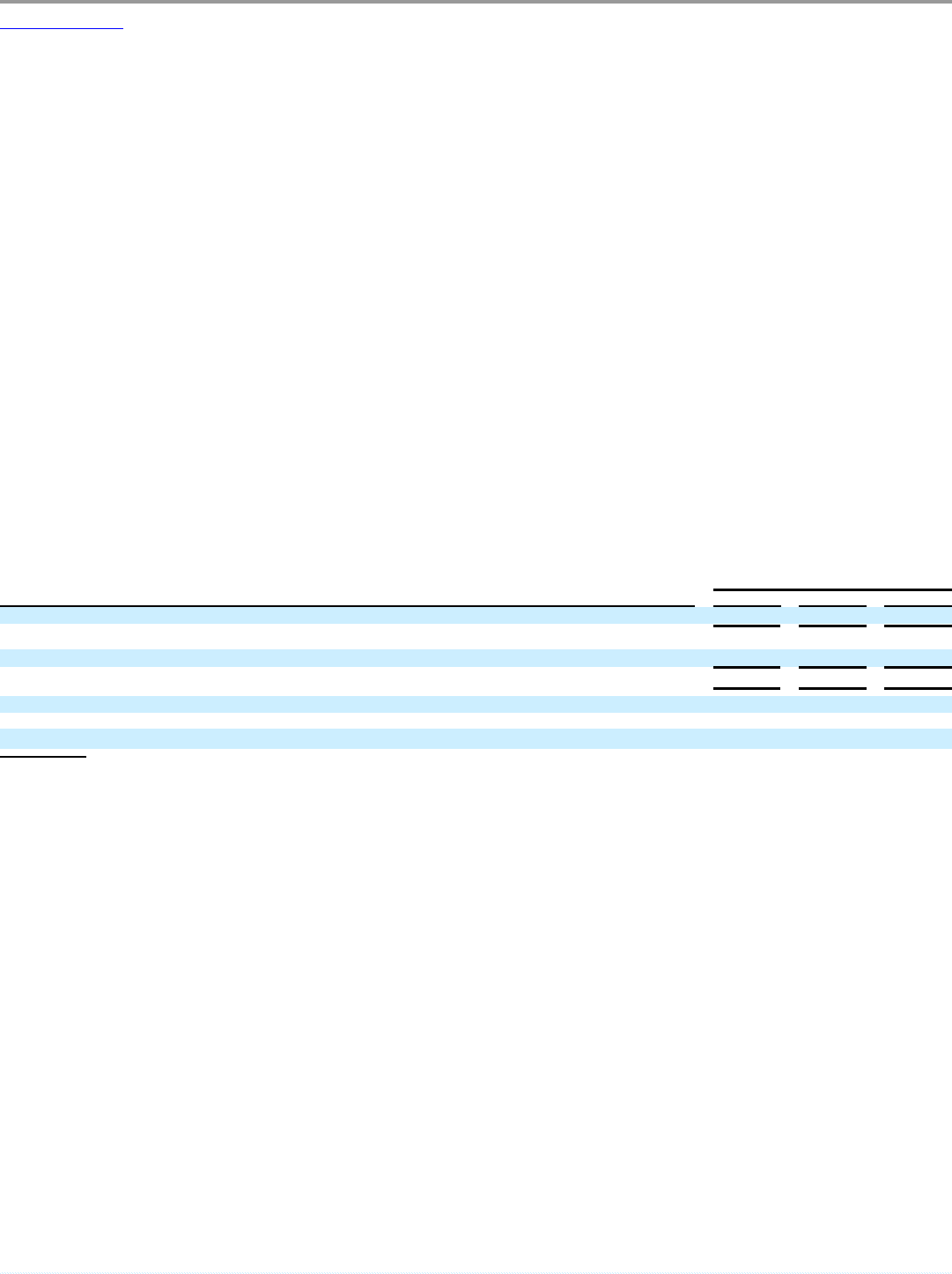
Table of Contents
ORACLE CORPORATION
NOTES TO CONSOLIDATED FINANCIAL STATEMENTS—(Continued)
May 31, 2006
The Internal Revenue Service has examined our federal income tax returns for all years through 1999 without any material adjustment of taxes due. The IRS is
currently examining our federal income tax returns for 2000 through 2003. We do not believe that the outcome of these matters will have a material adverse
effect on our consolidated financial position or results of operations. We are also under examination by numerous state and non-US tax authorities. We believe
that we have adequately provided for any reasonably foreseeable outcome related to these audits.
The valuation allowance was $189 million at May 31, 2006 and $44 million at May 31, 2005. The increase is attributable to acquired deferred tax assets of
Siebel, principally federal and state net operating loss carryforwards. Any subsequent reduction of this valuation allowance and the recognition of the associated
tax benefits will be applied first to reduce goodwill and then to intangible assets established pursuant to the related acquisition.
At May 31, 2006, we had federal net operating loss carryforwards of approximately $1.6 billion. These losses expire in various years between 2011 and 2026,
and are subject to limitations on their utilization. We have state net operating loss carryforwards of approximately $1.9 billion, which expire between 2007 and
2026, and are subject to limitations on their utilization. We have tax credit carryforwards of approximately $140 million, which are subject to limitations on their
utilization. Approximately $53 million of these tax credit carryforwards are not currently subject to expiration dates. The remainder, approximately $87 million,
expires in various years between 2013 and 2026.
Our intercompany transfer pricing is currently being reviewed by the IRS and by foreign tax jurisdictions and will likely be subject to additional audits in the
future. We previously negotiated three unilateral Advance Pricing Agreements with the IRS that cover many of our intercompany transfer pricing issues and
preclude the IRS from making a transfer pricing adjustment within the scope of these agreements. However, these agreements, which are effective for fiscal years
through May 31, 2006, do not cover all elements of our intercompany transfer pricing issues and do not bind tax authorities outside the United States. We
recently finalized one bilateral Advance Pricing Agreement and currently are negotiating an additional bilateral agreement to cover the period from June 1, 2001
through May 31, 2008. There can be no guarantee that such negotiations will result in an agreement.
10. EARNINGS PER SHARE
Basic earnings per share is computed by dividing net income for the period by the weighted-average number of common shares outstanding during the period.
Diluted earnings per share is computed by dividing net income for the period by the weighted-average number of common shares outstanding during the period,
plus the dilutive effect of outstanding stock options and shares issuable under the employee stock purchase plan using the treasury stock method. The following
table sets forth the computation of basic and diluted earnings per share:
Year Ended May 31,
(in millions, except per share data) 2006 2005 2004
Net income $ 3,381 $ 2,886 $ 2,681
Weighted-average common shares outstanding 5,196 5,136 5,215
Dilutive effect of employee stock plans 91 95 111
Dilutive weighted-average common shares outstanding 5,287 5,231 5,326
Basic earnings per share $ 0.65 $ 0.56 $ 0.51
Diluted earnings per share $ 0.64 $ 0.55 $ 0.50
Shares subject to anti-dilutive stock options excluded from calculation(1)
123 141 132
(1) These weighted shares relate to anti-dilutive stock options and could be dilutive in the future. See Note 7 for information regarding the prices of our
outstanding, unexercised options.
90
Source: ORACLE CORP, 10-K, July 21, 2006 Powered by Morningstar® Document Research℠


